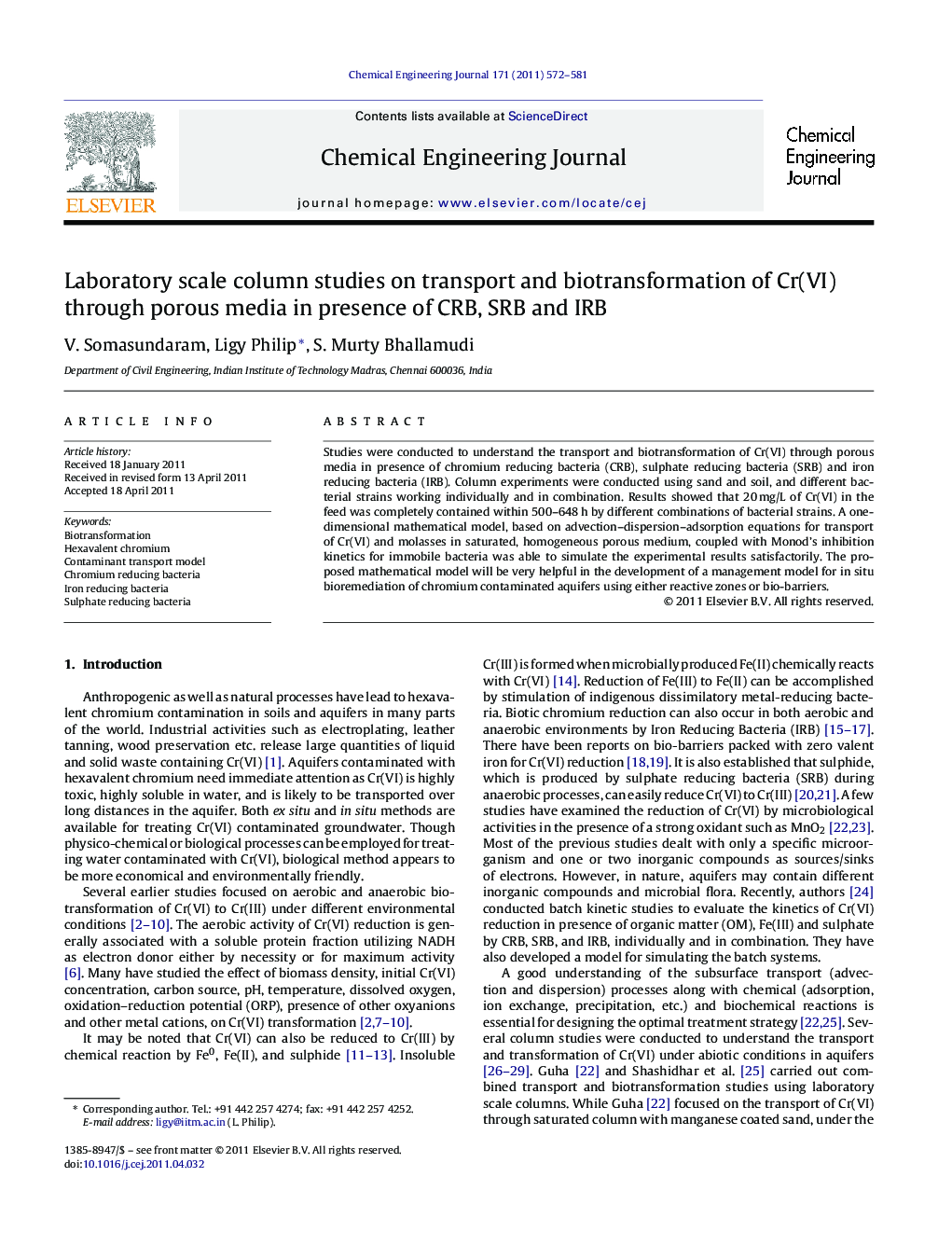| کد مقاله | کد نشریه | سال انتشار | مقاله انگلیسی | نسخه تمام متن |
|---|---|---|---|---|
| 150612 | 456453 | 2011 | 10 صفحه PDF | دانلود رایگان |

Studies were conducted to understand the transport and biotransformation of Cr(VI) through porous media in presence of chromium reducing bacteria (CRB), sulphate reducing bacteria (SRB) and iron reducing bacteria (IRB). Column experiments were conducted using sand and soil, and different bacterial strains working individually and in combination. Results showed that 20 mg/L of Cr(VI) in the feed was completely contained within 500–648 h by different combinations of bacterial strains. A one-dimensional mathematical model, based on advection–dispersion–adsorption equations for transport of Cr(VI) and molasses in saturated, homogeneous porous medium, coupled with Monod's inhibition kinetics for immobile bacteria was able to simulate the experimental results satisfactorily. The proposed mathematical model will be very helpful in the development of a management model for in situ bioremediation of chromium contaminated aquifers using either reactive zones or bio-barriers.
► Transport and biotransformation of Cr(VI) through porous media in presence of a mixture of bacteria were studied.
► Column studies were conducted using different bacterial strains individually and in combination.
► A one-dimensional mathematical model for transport and transformation coupled with Monod's inhibition kinetics for immobile bacteria in saturated porous media was developed.
► The developed model was able to simulate the experimental results satisfactorily.
► The mathematical model will be helpful in developing management models for in situ bioremediation of chromium contaminated aquifers.
Journal: Chemical Engineering Journal - Volume 171, Issue 2, 1 July 2011, Pages 572–581